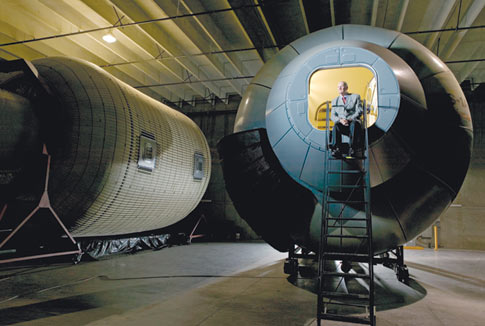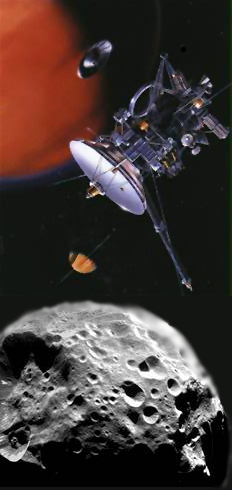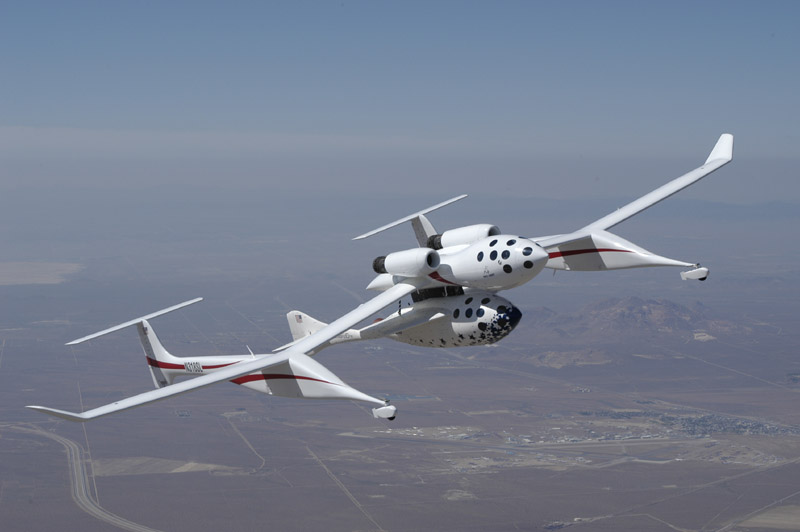Current events
From the Quicksilver Metaweb.
Note: the current events link to the left is a holdover from the Wikipedia's configuration and will probably go away.
Author Sightings
- Neal Stephenson Sightings - Missed him at the UCLA Festival of Books this spring.
- Thomas Pynchon Sightings - This would have to be a bit of an in-joke about an elusive author. Though he has let his affections for The Simpsons(TV show) allow him to break cover at least vocally. The world is an odd place.
Current Events ala The Confusion:
- Talk of Witches at Vatican Inquisition Conference - Pope cops to Church not acting in a Christian-enough manner while attempting to curb heresy beginning in 1233.
Current Events ala Cryptonomicon:
- World's First Mobile Virus Is Not Lethal, Yet - seems Men are capable of evil. Avi Halaby's paranoia would be justified.
- Seattle Sci-Fi Museum Braces for Visitor Invasion - think of Chester.
Current Events a la the Metaverse
Thomas Congressional Database to Be Revamped All kinds of rumored new features. One thing's for sure - it'll probably break all those web-scrapers: Article Link
Russias Biggest Spammer Brutally Murdered in Apartment
Created: 25.07.2005 13:14 MSK (GMT +3), Updated: 14:24 MSK, 8 hours 37 minutes ago
MosNews
Vardan Kushnir, notorious for sending spam to each and every citizen of Russia who appeared to have an e-mail, was found dead in his Moscow apartment on Sunday, Interfax reported Monday. He died after suffering repeated blows to the head.
Kushnir, 35, headed the English learning centers the Center for American English, the New York English Centre and the Centre for Spoken English, all known to have aggressive Internet advertising policies in which millions of e-mails were sent every day....
Science Exploration Events
Scaled Composites and Virgin Galactic announce The Spaceship Company
Richard Branson and Burt Rutan Form Spacecraft Building Company
By Leonard David
Senior Space Writer
27 July 2005
British entrepreneur, Sir Richard Branson, has teamed up with aerospace designer, Burt Rutan of Scaled Composites to form a new aerospace production company. The new firm will build a fleet of commercial suborbital spaceships and launch aircraft.
Called The Spaceship Company [MSL - like the vehicle names, it sounds like Rutan is a Sesame Street or Mister Rogers fan...], the new entity will manufacture launch aircraft, various spacecraft and support equipment and market those products to spaceliner operators. Clients include launch customer, Virgin Galacticformed by Branson to handle space tourist flights.
The Spaceship Company is jointly owned by Bransons Virgin Group and Scaled Composites of Mojave, California. Scaled will be contracted for research and development testing and certification of a 9-person SpaceShipTwo (SS2) design, and a White Knight Two (WK2) mothership to be called Eve. Rutan will head up the technical development team for the SS2/WK2 combination.
-endquote-
While it appears that some 100 wealthy folk have ponied up the $200k ticket price, this appears to be one more case of the wealthy paying for the capitalization of yet another industry, with the industry creators hoping to bring the price down over time within the reach of normal folk. They'll likely get the price down to about $50k about the same time that $50k is a months salary to the average bloke...Mike Lorrey 09:19, 29 Jul 2005 (PDT)
Americas Space Prize

Former NASA engineer William Schneider (above) designed the modules that Las Vegas mogul
Robert Bigelow hopes will constitute the worlds first orbital hotel.
...After TransHab was cancelled, Bigelow bought the exclusive development rights from NASA and entered into a Space Act Agreement with the agency to allow him to work with former TransHab engineers still employed there. And he tracked down Schneider, by then retired from NASA and teaching at Texas A&M University. Schneider was surprised when he got the call, but he agreed to see for himself what Bigelow was up to. The modules Bigelow has on display, though empty except for floors and structural elements, had their intended effect on Schneider. And god, he recalls now, when I walked in here, boom! It was mind-boggling, because this is the vision that I really wanted. Heres these things, all sitting there, and of course some of them are mock-ups, but the rest were inflatable, and I said, Man, hes serious. Hes not playing around. These days Schneider and his former TransHab colleagues visit the plant every few weeks to provide guidance to Bigelows engineers. For Schneider, its a chance to follow through on some unfinished business. Its kind of like you want to see your child grow up to maturity, he says, not be stopped in its adolescence." ...

Various configurations of space stations
using Bigelows inflatable habitat modules.
American entrepreneur Robert Bigelow, Budget Suites of America hotel chain owner and founder of Bigelow Aerospace, has announced a new space prize of $50 million to the American based team that can launch an orbital passenger ship to supply passenger transport and support services to Bigelows planned orbital hotel resort. Bigelow's pioneering inflatable space habitat modules promise reliable and affordable modular construction of space habitats, both in orbit and on lunar/asteroidal surfaces, as well as for use in interplanetary spacecraft like Bigelow's proposed "Nautilus Moon Cruiser".
Link
Oh Well, You've Seen One Reddish Deserted Planet, You've Seen 'Em All...
Huygens touched down on Titan after a 142 minute parachute descent through the Titanian atmosphere. Microphones collected sound data on the Titanian wind ("woooooshhhhhhhh"), while radar measured ground geography as it was passed over and other sensors measured atmospheric chemistry. A grand total of 4 hours of science data was beamed back to Earth via Cassini and a number of earth based radio telescopes.
With a project budget of $600 million for the Huygens probe (not counting the free ride), the europeans spent a fabulous $2.5 million per science minute of data, as compared to the $800.00 per minute average for the 7 years of data collection performed and planned for the US Cassini probe.
Photographs from the descent spotted river systems and mountainous terrain, but the landing site was disappointingly similar to every other planet we've landed on (Venus, Mars), making this commentator speculate that the Tatooine climate is the standard one for terrestrial planets and moons in this universe....
Cassini-Huygens
- http://astron.berkeley.edu/~madamkov/titan/

Moon Phoebe and
the Cassini Spacecraft
More information and images from the
Phoebe fly-by are available
online at NASA
In separate new observations by the Keck Telescope in Hawaii, astronomers have peered into Titan's smoggy atmosphere and produced an animated plunge through it. The studies may help mission managers make final plans for observations by the Cassini spacecraft and its piggybacked Huygens probe, which will parachute to the surface of Titan early next year. Cassini-Huygens will go into orbit around Saturn in July after a nearly seven-year journey. The mothership will explore Saturn's atmosphere, rings and moons, including Titan on several flybys. Huygens is expected to provide a remarkable and potentially breakthrough look at the unexplored surface of Titan and, scientists hope, reveal in pictures and other data how much Titan resembles the planet Earth in its early years.
Plane Soars Out of Earth's Atmosphere
MOJAVE, Calif. (AP) - A rocket plane soared above Earth's atmosphere Monday in the first privately financed manned spaceflight, then glided back to Earth for an unpowered landing. SpaceShipOne pilot Mike Melvill was aiming to fly 62 miles above the...
Private rocket ship breaks space barrier
'Almost a religious experience,' says history-making pilot
MOJAVE, Calif. - With a triumphant thumbs-up and a broad grin, the pilot of the SpaceShipOne rocket plane celebrated becoming the first private-sector astronaut to steer his ship into space.
"I feel great, I really do!" pilot Mike Melvill exclaimed after emerging from his craft on the tarmac of the Mojave Airport here. ...
Ansari X Prize Sourced from Wikipedia
The ANSARI X PRIZE (often just called the X Prize) is a $10,000,000 USD prize, to be awarded to the first non-government organization that can launch a reusable manned spacecraft into space.
The X Prize is designed to help encourage the space industry in the private sector, which is why the entries are not allowed to have any government funding. It aims to demonstrate that space flight can be affordable and accessable to corporations and civilians, opening the door to commercial space flight and space tourism. It also hopes that competition will breed innovation, introducing new low-cost methods of entering Earth's orbit. If everything goes as planned, the X Prize winners could become pioneers of low-cost space travel and unfettered human expansion into the solar system.
27 teams from around the world are participating, ranging from volunteer hobbyists to large corporate-backed operations. Some teams have made headlines with their tests, and one, SpaceShipOne (made by Scaled Composites), plans a high-profile, full altitude test flight of their craft on June 21, 2004.
The X Prize is modeled after many prizes from the early 20th century that helped prod the development of air flight notably the $25,000 Orteig Prize that spurred Charles Lindbergh to make his solo flight across the Atlantic Ocean. NASA is developing similar prize programs called Centennial Challenges.
Contest
The prize will be awarded to the first team that can launch a piloted spacecraft, carrying at least three crewmembers (or one human pilot and ballast equivalent to two more), to an altitude of at least 100 kilometers (62 miles), and then repeat the feat using the same spacecraft within two weeks. This is a sub-orbital flight, which reaches the boundary of space, as defined by the FAI, but doesn't go into Earth orbit. The spacecraft will be able to land at the same site that it launched from.
The two flights must be made by the same vehicle. With the exception of propellant, no more than 10% of the vehicle may be replaced between flights; the rest of the vehicle must be reused. Even NASA 's space shuttle falls short of this performance requirement, since it takes much more than two weeks to ready a given shuttle between flights. The vehicle must be intact and theoretically reusable after the second flight, and of course the crew must return unharmed.
Organization
Created in May 1996 and initially called just X PRIZE, it was renamed ANSARI X PRIZE on May 6, 2004 following a multimillion dollar donation from Iranian -born entrepreneurs Anousheh Ansari and Amir Ansari.
The X PRIZE Foundation, (based in St. Louis, Missouri), maintains a list of organizations registered to compete for the prize. Some companies developed their craft in secret, not publicly announcing their plans until they're ready to request air/space permission from their local government. Such is the case with Scaled Composites, a company that remained unknown as a competitor until April 2003. This list notably does not include traditional space access companies like Boeing and Lockheed, which many in the industry believe to be incapable of replacing their present space transportation vehicles with low-cost alternatives. These critics claim as evidence the companies' several failed attempts to do so, such as the X-33 project, on contract from NASA and other U.S. government agencies. However, the X Prize Foundation itself does not bar these companies from applying, so long as they can prove their efforts on this project would be free of government funding.
Currently, the X Prize's funding will expire on January 1, 2005. Therefore, most of the teams that are still in the running are scurrying to launch before then. While the list of teams in the forefront might seem obvious based on news reports and updates on the team web sites, any teams developing in secret might appear suddenly on the playing field.
List of Contestants
- Acceleration Engineering
- Advent Launch Services
- Aeronautics and Cosmonautics Romanian Assoc. (ARCA)
- Armadillo Aerospace
- American Astronautics Corporation
- Bristol Spaceplanes, Ltd
- Canadian Arrow
- The da Vinci Project
- Pablo de Leon & Associates
- Discraft Corporation
- Flight Exploration
- Fundamental Technology Systems
- HARC
- IL Aerospace Technologies
- Interorbital Systems
- Kelly Space and Technology
- Lone Star Space Access Corporation
- Micro-Space, Inc.
- PanAero, Inc.
- Pioneer Rocketplane, Inc.
- Scaled Composites, LLC
- Space Transport Corporation
- Starchaser Industries
- Suborbital Corporation
- TGV Rockets
- Vanguard Spacecraft

SpaceShipOne over the Mojave Desert
SpaceShipOne
SpaceShipOne is a privately funded experimental spaceplane being developed by Burt Rutan 's company, Scaled Composites, as their entry in the X-Prize competition. Paul Allen, a cofounder of Microsoft, is the sole source of the funding.
It is widely expected during 2004 to meet the US criterion for a spaceflight by exceeding an altitude of 50 miles (80 km) and the international FAI definition of a spaceflight by passing the 100km (62.5 miles) mark.
SpaceShipOne shares some features from earlier rocket planes . It uses a hybrid rocket motor powered by nitrous oxide and hydroxy-terminated polybutadiene (rubber), and is launched at altitude by a jet powered carrier aircraft called White Knight . The craft has a unique system of 'wing feathering', during re-entry to the denser parts of the atmosphere the wings can be swivelled from horizontal to nearly vertical to provide a controlled flight at reduced velocity. The cabin has space for three people, including the pilot .
Powered test flights of SpaceShipOne| Date | Top Speed | Apogee | Pilot | | December 17, 2003 | Mach 1.2 | 20.7 km | Brian Binnie | | April 8, 2004 | Mach 2 | 30 km | Peter Siebold | | May 13, 2004 | Mach 2.5 | 60 km | Mike Melville | | June 21, 2004 | | 100 km | Planned |
On April 1, 2004, Scaled Composites received the first license for sub-orbital piloted rocket flights to be issued by the US Department of Transportation . This license permits the company to conduct powered test flights for a period of one year. SpaceShipOne is registered with the FAA as N328KF .
On December 17, 2003 (100 years to the day since the Wright Brothers made the first powered flight) it made its first powered flight, following several months of glide tests. The test pilot was Brian Binnie, who took control when it was released from the carrier aircraft at 48,000 feet (14,630 m). During this first flight the rocket plane became the first privately-funded aircraft to go supersonic when it achieved a speed of 930 mph (Mach 1.2) and an altitude of 68,000 feet (20,725 m). It sustained damage in a rough landing (which included a runway excursionaccidentally going off the runwayand subsequent damage to the landing gear), but the broken parts were repairable and the pilot was not injured. After this accident, SpaceShipOne was repaired and flew again on March 11, 2004 in an unpowered glide test.
On April 8, 2004, SpaceShipOne made its second powered flight, reaching Mach 2 and climbing to 105,000 feet (about 30km), above the Mojave Desert .[1]
A third flight was made on May 13, 2004, this time reaching Mach 2.5 and an apogee of 212,000 feet (about 37.5 miles or 60km), breaking previous altitude records for a non-governmental craft. The pilot was Mike Melville.
A flight scheduled for June 21, 2004 is expected to reach 100 km (62.5 miles) altitude, the first threshhold for the X Prize, although the flight was not registered with the X PRIZE Foundation as an official competitive flight.

SpaceShipOne and White Knight during a captive carry test
A rocket flight for the common man?
Leader in private space race predicts new era of tourism. June 21st will see the first 62.5 mile high private attempt.
"We are encouraging people to come and bring kids," said engineer Burt Rutan, who built SpaceShipOne. "We fly to space directly over the crowd instead of going way down range, and it lands back in the same place like a small, light plane at a private airport." is of interest to Stephenson fans because one investor is the Cryptonomicon's Chester-like Seattle resident Paul Allen.
Note: 2 of the X-Prize vehicles have crashed. No one hurt.
- Private Spaceship Completes Second Rocket-Powered Test Flight
- SpaceShipOne at Scaled Composites's website
- Private Craft to Shoot for Space by Irene Mona Klotz, Discovery News
- Full List of Participants
- Historic rocket powered by rubber fuel
- How it is going to work
- New spaceport set for milestone mission - Privately funded launch stirs space dreams anew
